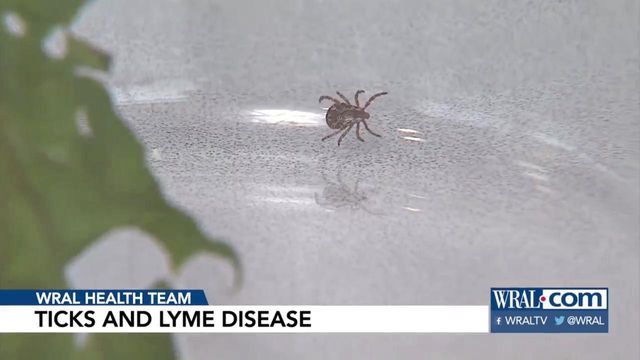Perform head-to-toe tick checks to mitigate Lyme disease risk
In North Carolina, Lyme disease is a threat and needs to be identified and treated early.
Posted — UpdatedWarmer weather is inviting more people outdoors to work in the garden, to hike in the woods or to enjoy a picnic.
When people get outside, though, there's always the risk of a bite that can transmit a tick-borne disease. In North Carolina, Lyme disease is a threat and needs to be identified and treated early.
Dr. Alan Taege, an infectious disease expert at the Cleveland Clinic, says it's important for people to check their bodies for ticks as soon as they come indoors.
"If you do this within a short time of having been outdoors you may find them, and then remove them, and no harm done because it usually on average takes several hours before they can cause illness," Taege said.
Tage said ticks will bite anywhere on your body, but they prefer secluded areas like your hair or under your arms.
The smallest ticks are brownish in color, about the size of two pinheads.
A head-to-toe check with a helper checking your scalp is the best strategy.
If a tick attaches itself, it implants its tiny needle-like nose in your skin to suck out blood. That nose leaves bacteria in your system, which leads to infection.
If a tick is attached, Taege recommends using a pair of fine nose tweezers to carefully remove it.
"Get around the head of the tick and try to pluck it off and rather than grabbing the body and squeezing, because if you grab the body and squeeze you'll just have a greater chance of forcing more bacteria into your system," Taege said.
Taege said people should watch for symptoms for three to 30 days after finding a tick. Symptoms linclude fatigue, chills, fever, headache, muscle and joint aches, and swollen lymph nodes.
Three out of four people develop a red rash that resembles a bull's-eye target. The rash can be as large as 12 inches across.
State health experts say if not treated early, a Lyme disease infection can spread to a person's joints, heart and nervous system. Most cases can be successfully treated with a few weeks' worth of antibiotics.
• Credits
Copyright 2024 by Capitol Broadcasting Company. All rights reserved. This material may not be published, broadcast, rewritten or redistributed.





